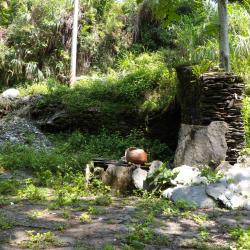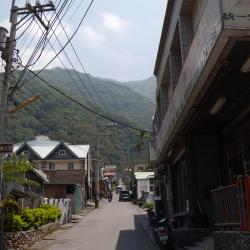The Tianlong Suspension Bridge is located behind the Tianlong Hotel in Haiduan Township, Taitung County. It was built in the valley between Wulu and Lidao on the Wulu-Hari section of the Guanshan Historic Trail, which was built in the middle of the Japanese occupation period. The mountains on both sides of the bank are steep and the suspension bridge hangs in the sky like a long dragon, hence the name Tianlong Suspension Bridge.
However, in the early post-war period, the Tianlong Suspension Bridge was impassable due to years of neglect. It was not until the Southern Cross-island Highway was opened that the bridge was restored for the purpose of transporting people and supplies. The original section of the historic trail that leads directly to Lidao was made into the Tianlong Historic Trail, which connects the Tianlong Hotel and the Southern Cross-island Highway. It is also a shortcut from Wulu to Lidao.

